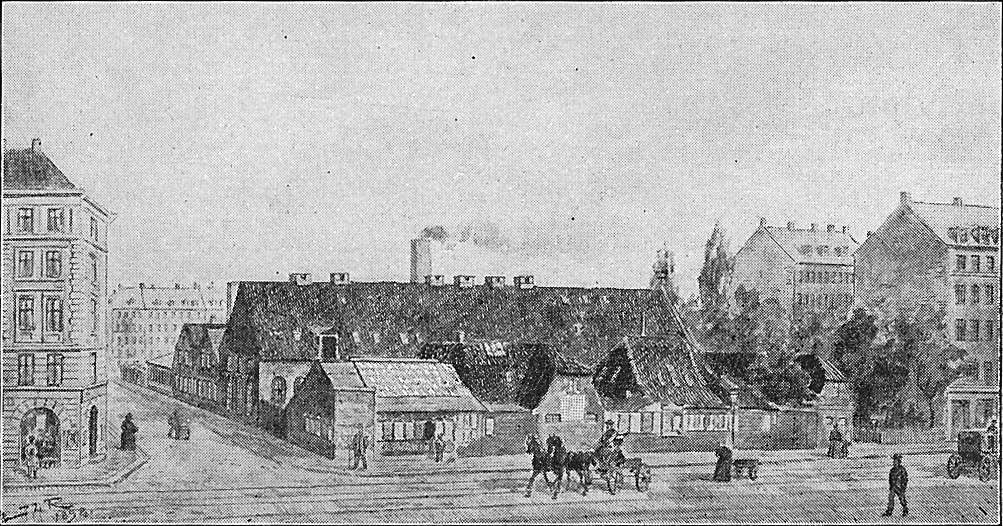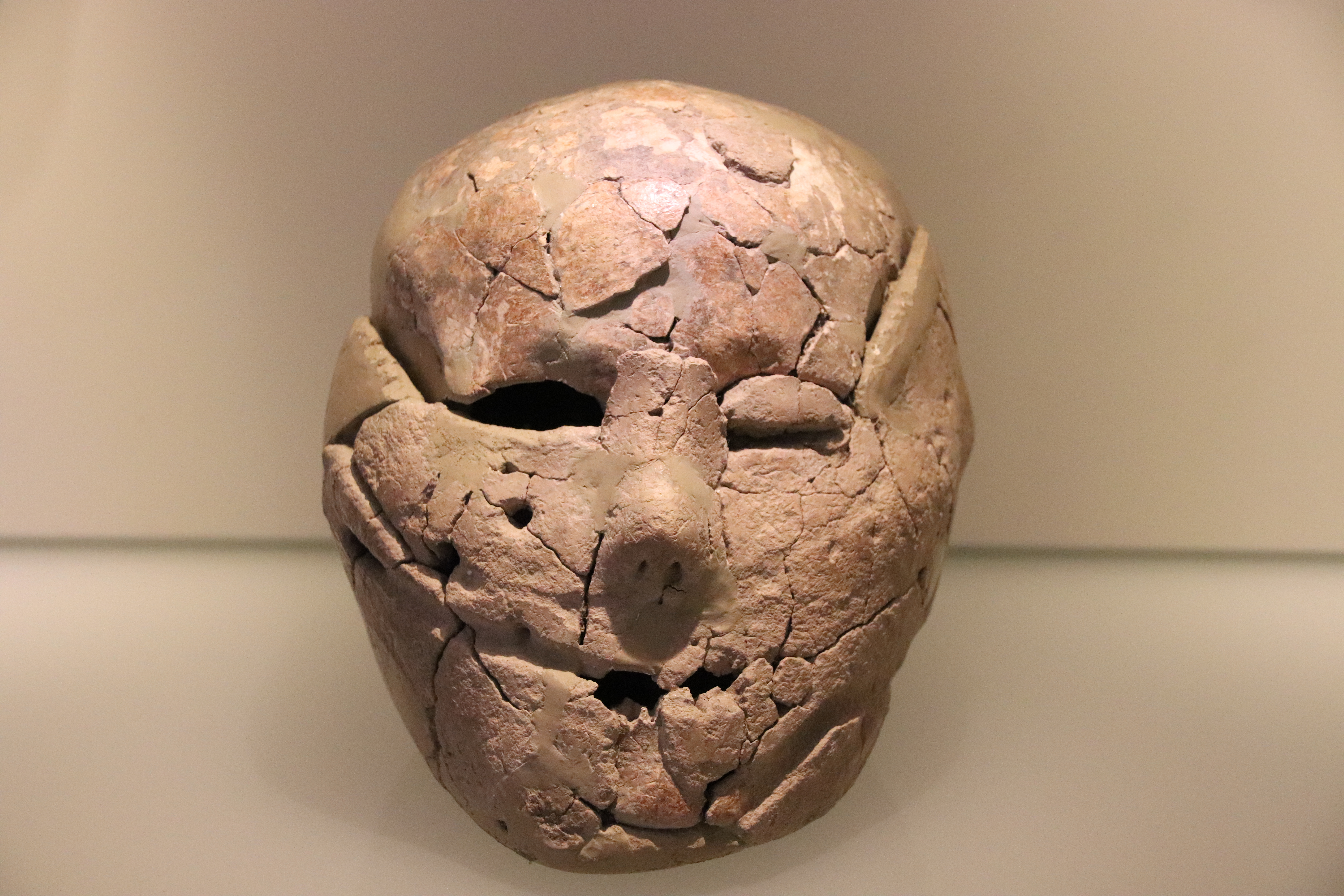|
Anker Heegaard
Steffen Peder Anker Heegaard (29 July 1815 – 19 September 1893) was a Danish industrialist. His company was headquartered in Havnegade in Copenhagen and operated two manufacturing sites in Nørrebro and Frederiksværk. Products included cast ironware, steam engines and agricultural machines. He was a member of the Copenhagen City Council from 1868 to 1885 and president of Industriforeningen from 1871 to 1876. Early life Heegaard was born in Copenhagen, the son of Mathias Anker Heegaard (1776–1837) and Henrikke Baggine Heegaard née Hornemann (1780–1849). His father was the owner of a hardware store and in 1828 also established a small iron foundry in Nørrebro. After his confirmation, Heegaard became an apprentice in his father's hardware store. He also attended Det von Westenske Institut in Nørregade. Career Heegaard and his elder brother Christian August Heegaard (1810–1879) continued their father's business after his death in 1837. Anker Hegaard became the s ... [...More Info...] [...Related Items...] OR: [Wikipedia] [Google] [Baidu] |
Copenhagen
Copenhagen ( or .; da, København ) is the capital and most populous city of Denmark, with a proper population of around 815.000 in the last quarter of 2022; and some 1.370,000 in the urban area; and the wider Copenhagen metropolitan area has 2,057,142 people. Copenhagen is on the islands of Zealand and Amager, separated from Malmö, Sweden, by the Øresund strait. The Øresund Bridge connects the two cities by rail and road. Originally a Vikings, Viking fishing village established in the 10th century in the vicinity of what is now Gammel Strand, Copenhagen became the capital of Denmark in the early 15th century. Beginning in the 17th century, it consolidated its position as a regional centre of power with its institutions, defences, and armed forces. During the Renaissance the city served as the de facto capital of the Kalmar Union, being the seat of monarchy, governing the majority of the present day Nordic countries, Nordic region in a personal union with Sweden and N ... [...More Info...] [...Related Items...] OR: [Wikipedia] [Google] [Baidu] |
Businesspeople From Copenhagen
A businessperson, businessman, or businesswoman is an individual who has founded, owns, or holds shares in (including as an angel investor) a private-sector company. A businessperson undertakes activities (commercial or industrial) for the purpose of generating cash flow, sales, and revenue by using a combination of human, financial, intellectual, and physical capital with a view to fueling economic development and growth. History Prehistoric period: Traders Since a "businessman" can mean anyone in industry or commerce, businesspeople have existed as long as industry and commerce have existed. "Commerce" can simply mean "trade", and trade has existed through all of recorded history. The first businesspeople in human history were traders or merchants. Medieval period: Rise of the merchant class Merchants emerged as a "class" in medieval Italy (compare, for example, the Vaishya, the traditional merchant caste in Indian society). Between 1300 and 1500, modern accountin ... [...More Info...] [...Related Items...] OR: [Wikipedia] [Google] [Baidu] |
19th-century Copenhagen City Council Members
The 19th (nineteenth) century began on 1 January 1801 (Roman numerals, MDCCCI), and ended on 31 December 1900 (Roman numerals, MCM). The 19th century was the ninth century of the 2nd millennium. The 19th century was characterized by vast social upheaval. Slavery was abolitionism, abolished in much of Europe and the Americas. The Industrial Revolution, First Industrial Revolution, though it began in the late 18th century, expanding beyond its British homeland for the first time during this century, particularly remaking the economies and societies of the Low Countries, the Rhineland, Northern Italy, and the Northeastern United States. A few decades later, the Second Industrial Revolution led to ever more massive urbanization and much higher levels of productivity, profit, and prosperity, a pattern that continued into the 20th century. The Gunpowder empires, Islamic gunpowder empires fell into decline and European imperialism brought much of South Asia, Southeast Asia, and almost ... [...More Info...] [...Related Items...] OR: [Wikipedia] [Google] [Baidu] |
19th-century Danish Businesspeople
The 19th (nineteenth) century began on 1 January 1801 ( MDCCCI), and ended on 31 December 1900 ( MCM). The 19th century was the ninth century of the 2nd millennium. The 19th century was characterized by vast social upheaval. Slavery was abolished in much of Europe and the Americas. The First Industrial Revolution, though it began in the late 18th century, expanding beyond its British homeland for the first time during this century, particularly remaking the economies and societies of the Low Countries, the Rhineland, Northern Italy, and the Northeastern United States. A few decades later, the Second Industrial Revolution led to ever more massive urbanization and much higher levels of productivity, profit, and prosperity, a pattern that continued into the 20th century. The Islamic gunpowder empires fell into decline and European imperialism brought much of South Asia, Southeast Asia, and almost all of Africa under colonial rule. It was also marked by the collapse of the la ... [...More Info...] [...Related Items...] OR: [Wikipedia] [Google] [Baidu] |
Louis Hasselriis
Louis Hasselriis (12 January 1844 – 20 May 1912) was a Danish sculptor known for his public statuary. Early life and education Hasselriis was born in Hillerød, the son of Herman Edvard Louis H (1815–1907) and Sophie Frederikke Schondel (1802–55). Gis mother had previously been married to pharmacist in Hillerød Ebbe Madsen Andresen, 1802–38) and her new husband took over the pharmacy in connection with their wedding. He later bought a farm in . Hasselriis apprenticed as a wood carver under Wille and later in the studio of Herman Wilhelm Bissen. He attended the Royal Danish Academy of Fine Arts in 1859–66 and won the small gold medal in 1868 for ''David forbereder sig til kamp med Goliath''. Career Hasselriis had his debut at the Charlottenborg Exhibition in 1863. From 1869 and for the rest of his life he lived in Rome, but retained strong links with his homeland and also with the USA. In Denmark he created a statue of William Shakespeare for Helsingør and ... [...More Info...] [...Related Items...] OR: [Wikipedia] [Google] [Baidu] |
Svendborg
Svendborg () is a town on the island of Funen in south-central Denmark, and the seat of Svendborg Municipality. With a population of 27,300 (1 January 2022), Svendborg is Funen's second largest city.BY3: Population 1st January by urban areas, area and population density The Mobile Statbank from In 2000 Svendborg was declared "Town of the year" in Denmark, and in 2003 it celebrated its 750th anniversary as a . By road, Svendborg is located southwest of |
Assistens Cemetery (Copenhagen)
Assistens Cemetery ( Danish: Assistens Kirkegård) in Copenhagen, Denmark, is the burial site of many Danish notables as well as an important greenspace in the Nørrebro district. Inaugurated in 1760, it was originally a burial site for the poor laid out to relieve the crowded graveyards inside the walled city, but during the Golden Age in the first half of the 19th century it became fashionable and many leading figures of the epoch, such as Hans Christian Andersen, Søren Kierkegaard, Christoffer Wilhelm Eckersberg, and Christen Købke are all buried here. Late in the 19th century, as Assistens Cemetery had itself become crowded, a number of new cemeteries were established around Copenhagen, including Vestre Cemetery, but through the 20th century, it continued to attract notable people. Among the latter are the Nobel Prize-winning physicist Niels Bohr and a number of American jazz musicians who settled in Copenhagen during the 1950s and 1960s, including Ben Webster and Kenn ... [...More Info...] [...Related Items...] OR: [Wikipedia] [Google] [Baidu] |
Danmarks Nationalbank
Danmarks Nationalbank (in Danish often simply ''Nationalbanken'') is the central bank of the Kingdom of Denmark. It is a non-eurozone member of the European System of Central Banks (ESCB). Since its establishment in 1818, the objective of the Nationalbank as an independent and credible institution is to issue the Danish currency, the krone, and ensure its stability. The Board of Governors holds full responsibility for the monetary policy. The building which houses the bank's headquarters was designed by the renowned architect Arne Jacobsen, in collaboration with Hans Dissing and Otto Weitling. After Jacobsen's death, his office, renamed Dissing+Weitling, has brought the construction to completion. Danmarks Nationalbank undertakes all functions related to the management of the Danish central-government debt. The division of responsibility is set out in an agreement between the Ministry of Finance of Denmark and Danmarks Nationalbank. Danish and Faroese banknotes were previou ... [...More Info...] [...Related Items...] OR: [Wikipedia] [Google] [Baidu] |
Portrait Of Louise Christine Heegaard, Née Feilberg
A portrait is a painting, photograph, sculpture, or other artistic representation of a person, in which the face and its expressions are predominant. The intent is to display the likeness, personality, and even the mood of the person. For this reason, in photography a portrait is generally not a snapshot, but a composed image of a person in a still position. A portrait often shows a person looking directly at the painter or photographer, in order to most successfully engage the subject with the viewer. History Prehistorical portraiture Plastered human skulls were reconstructed human skulls that were made in the ancient Levant between 9000 and 6000 BC in the Pre-Pottery Neolithic B period. They represent some of the oldest forms of art in the Middle East and demonstrate that the prehistoric population took great care in burying their ancestors below their homes. The skulls denote some of the earliest sculptural examples of portraiture in the history of art. Historical portraitur ... [...More Info...] [...Related Items...] OR: [Wikipedia] [Google] [Baidu] |





